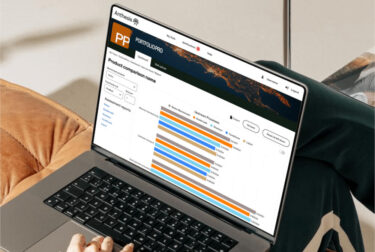
Contents
- Introduction to ISSB
- Goals of ISSB
- What are the IFRS S1 and S2 Standards?
- IFRS S1
- IFRS S2
- Key Challenges
Share this article
An Introduction to ISSB
The International Sustainability Standards Board (ISSB) was established by the International Financial Reporting Standards (IFRS) Foundation in November 2021 at COP26 in Glasgow. Following strong market demand, the ISSB develops standards to ensure a global baseline of sustainability disclosures aligned with the needs of investors and financial markets. The ISSB acts as an independent standard-setting body within the IFRS Foundation.
As sustainability begins to play a more significant role in investment decision-making, there are increasing demands for companies to provide high-quality, globally comparable information on sustainability-related risks and opportunities. This is what the ISSB seeks to do.
IFRS Sustainability Disclosure Standards are developed by the ISSB and have been in effect since January 2024. IFRS Sustainability Standards are developed to enhance investor-company dialogue so that investors receive decision-useful, globally comparable sustainability-related disclosures that meet their information needs.
The current landscape of voluntary, sustainability-related standards is fragmented and difficult to navigate. The ISSB standards aim to simplify this complexity and avoid additional costs by reducing the chance of double-reporting through the creation of one comparable global baseline – building on guidance from the Sustainability Accounting Standards Board (SASB), Task Force on Climate-Related Financial Disclosures (TCFD), and Climate Disclosure Standards Board (CDSB).
The ISSB is internationally backed by the G7, G20, International Organization of Securities Commissions (IOSCO), Financial Stability Board (FSB), African Finance Ministers and Finance Ministers, and Central Bank Governors from more than 40 jurisdictions. The UK, Australia, Canada, and some jurisdictions in Asia, Africa and Latin America plan to adopt the ISSB standards. Also, Japan has recently announced that it will adopt the ISSB as the basis for its sustainability standards.
What are the goals of the ISSB?
The ISSB has four key objectives:
- to develop standards for a global baseline of sustainability disclosures;
- to meet the information needs of investors;
- to enable companies to provide comprehensive sustainability information to global capital markets; and
- to facilitate interoperability with disclosures that are jurisdiction-specific and/or aimed at broader stakeholder groups.
What are the ISSB’s IFRS S1 and S2 Standards?
In June 2023, the ISSB issued two standards: S1 (sustainability-related) and S2 (climate-related). However, we are expecting to see additional topical standards released by the ISSB such as IFRS S3.
Importantly, the IFRS Foundation has now assumed responsibility for the TCFD, whose recommendations are already used by thousands of organisations across the world for reporting on climate-related risks and opportunities. Companies applying IFRS S1 and S2 will meet the TCFD recommendations since they are fully incorporated into the ISSB’s Standards.
What are the key elements of IFRS S1?
IFRS S1 requires a company to disclose information about its governance, strategy, and risk management processes, as well as any metrics and targets, regarding its sustainability-related risks and opportunities. These four core content areas reflect how companies manage those risks and opportunities. The four areas are consistent with and build on, the recommendations of the TCFD – extending the structure beyond climate to consider sustainability-related risks and opportunities.
The key requirements of IFRS S1 are for a company to disclose material information about the sustainability-related risks and opportunities that could reasonably be expected to affect the entity’s cash flows, access to finance, or cost of capital over the short, medium, or long-term.
What are the key elements of IFRS S2?
IFRS S2 sets out the requirements for disclosing climate-related risks and opportunities.
Similar to S1 but with an explicit climate focus instead of a wider sustainability lens, S2 requires that an entity provide information about climate-related risks and opportunities – both physical and transition – that could reasonably be expected to affect its cash flows, access to finance, or cost of capital over the short, medium, or long-term.
This includes information on four pillars – governance, strategy, risk management, and performance (also known as metrics and targets), in alignment with IFRS S1 and the current guidance framework set out by the TCFD. Specifically, this entails:
- the governance processes, controls, and procedures used to monitor, manage, and oversee climate-related risks and opportunities;
- the strategy for managing climate-related risks and opportunities;
- the processes used to identify, assess, prioritise, and monitor these, including whether and how those processes are integrated into and inform the overall risk management process; and
- the entity’s performance in relation to its climate-related risks and opportunities, including progress towards any climate-related targets it has set and any targets it is required to meet by law or regulation.
What are the challenges?
The challenges associated with meeting the requirements of the ISSB will be similar to that of any sustainability or climate-related disclosure. This primarily starts with difficulties in collecting the necessary data and undertaking the relevant assessments, such as those to understand climate risk or materiality (e.g., single versus double materiality). As part of this, there might be challenges around quantifying exact time horizons to evaluate impact at a more granular level.
Businesses will likely encounter challenges around disclosing this information, requiring many to reframe current reporting processes to integrate both financial and sustainability reporting. For some, this might be a greater shift than for others. At the same time, though, each of these challenges presents an opportunity for thought leadership around what exactly best practice sustainability disclosure looks like, all the way from the initial data gathering through to publishing integrated reports.
How can Anthesis support you?
Anthesis believes that by investing in and implementing the right governance, risk management and strategic planning processes, companies can become more resilient to the risks associated with climate change and other sustainability risks. And through effective reporting, they will be in a strong position to make better decisions for their future business.
Anthesis helps organisations cut through the complexity of reporting frameworks and focuses on what matters to key stakeholders, with an end-to-end offering that sets the stage for ISSB-aligned disclosure, risk management and value creation.
While many organisations have carried out single materiality assessments to help shape their ESG strategies, most have not focused in on financial materiality of sustainability-related risks and opportunities. As a crucial step towards ISSB-aligned reporting, our materiality process helps organisations focus in on and prioritise sustainability-related risks and opportunities that could affect the organisation’s prospects.
We use a robust risk and opportunity screening process which draws on expert sustainability panels, and industry frameworks and utilises an Anthesis designed ESG risk screening tool, RiskHorizon™.
Ever since the inception of the TCFD, Anthesis has been at the forefront of developing methodologies to support organisations in understanding their resilience to climate change, both the risks and opportunities. Our ISSB alignment offering extends beyond climate, using our experience across all areas of sustainability, industry, geography, and along the value chain.
We are the world’s leading purpose driven, digitally enabled, science-based activator. And always welcome inquiries and partnerships to drive positive change together.
